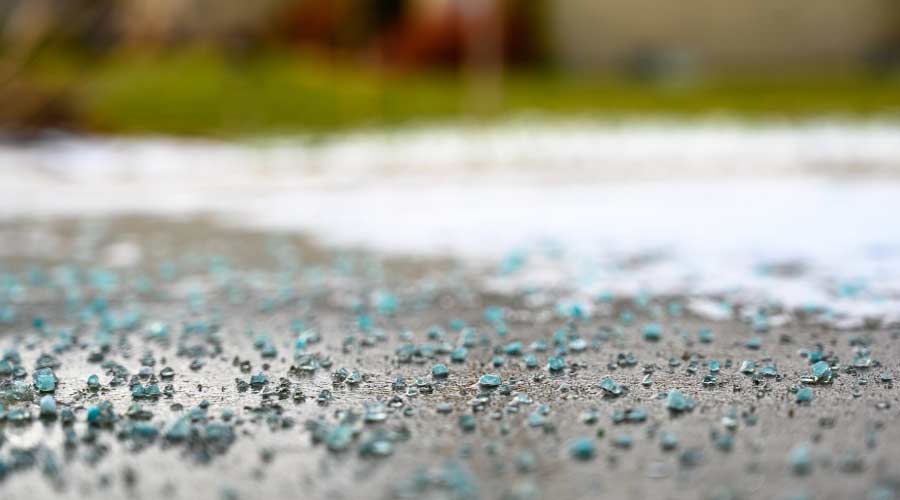Even as warmer weather approaches, one issue remains top of mind for some facilities managers – ice melts. While they are used mostly in colder weather, ice melts have been proven to reap benefits in other seasons. However, there are still misconceptions that surround the product and when is the best time to use it. Healthcare Facilities Today asked manufacturers of ice melt and snow removal products about common errors managers make when specifying these products.
What are common misconceptions or errors about when to spread ice melt/use snow remover?
“One thing that facility managers may not realize is that they can prolong the life of their concrete and other masonry surfaces really easily with one application of a water repellent with a salt screen. One application can last up to 10 years and protects concrete from all sorts of damage that occurs from salt and freeze-thaw cycles of winter. If a salt barrier is not applied prior to winter, when the salt that goes down on sidewalks and other horizontal surfaces for slip resistance purposes it will penetrate right into those substrates where they can cause more damage, including cracks, pitting and deterioration of the concrete. When the ice eventually melts, it’s going to take that salt with it into the concrete, where the salt is going to attack the rebar and any other metallic elements and cause spalling, unsightly rust stains, rust jacking and more. A protective treatment with a salt screen, on the other hand, prevents water, and water-carried salt, from penetrating into the surface. Plus, one application can protect the concrete for up to 10 or more years. The best time to apply a salt barrier is in late summer to early fall, so now is the perfect time for facility managers to start planning these applications.”
- Jake Boyer, business unit leader of PROSOCO’s Clean and Protect Group
“The common conception is, ‘When in doubt, put it out.’ Although there are many times when ice melters are used and would not have to be, it is typically considered ‘Better to be safe than sorry.’ I find that an often-overlooked component related to ice melt selection is the impact those ice melts will have on their floors. What gets applied outside ends up inside. As an example, calcium chloride and magnesium chloride are hygroscopic, which means they attract moisture to begin the melting process. This is terrific for melting snow or ice outside the building, but when those particles are inside the building, they will do the same thing and leave an oily wet residue which can often create a slip hazard inside the building. There are also ice-melt products on the market that do not have any residue. In other words, they track into buildings just like water. Using a residue-free ice melt near a building entrance has the ability to totally eliminate the mess and clean up expense caused by ice melt tracking inside of buildings.”
- Nate Clemmer, CEO, Secure Winter Products
“We’ve been working with facilities managers regarding their snow removal strategies for more than 17 years. There are two concerns we hear over and over again as they relate to various types of salt. The first is the concern that facilities departments don’t have enough staff on hand to ensure all areas that require snow removal attention are getting the proper attention they deserve. That’s why many facilities managers include heated snow melting mats as part of their winter tool box. Heated snow-melting mats will melt snow, keeping sidewalks and entrances clear 24/7, even when there’s not a facilities person available to tend to it. The second concern we often hear is how salt, whether calcium chloride, rock salt, or other salt products, leads to damaged floors in the building entrances and foyers. Snow melting mats offer a good solution to this issue, as mats that melt snow eliminate the need for salt products being used in front of the buildings.”
- Hillel Glazer, President, Heattrak LLC
Mackenna Moralez is the associate editor with Healthcare Facilities Today

 Why Identity Governance Is Becoming a Facilities Management Issue
Why Identity Governance Is Becoming a Facilities Management Issue Habitat Health Opens South Los Angeles PACE Center
Habitat Health Opens South Los Angeles PACE Center Denton County MHMR Center Suffers a Data Breach
Denton County MHMR Center Suffers a Data Breach What Every EVS Leader Needs To Know
What Every EVS Leader Needs To Know Blackbird Health Opens New Clinic in New Jersey
Blackbird Health Opens New Clinic in New Jersey